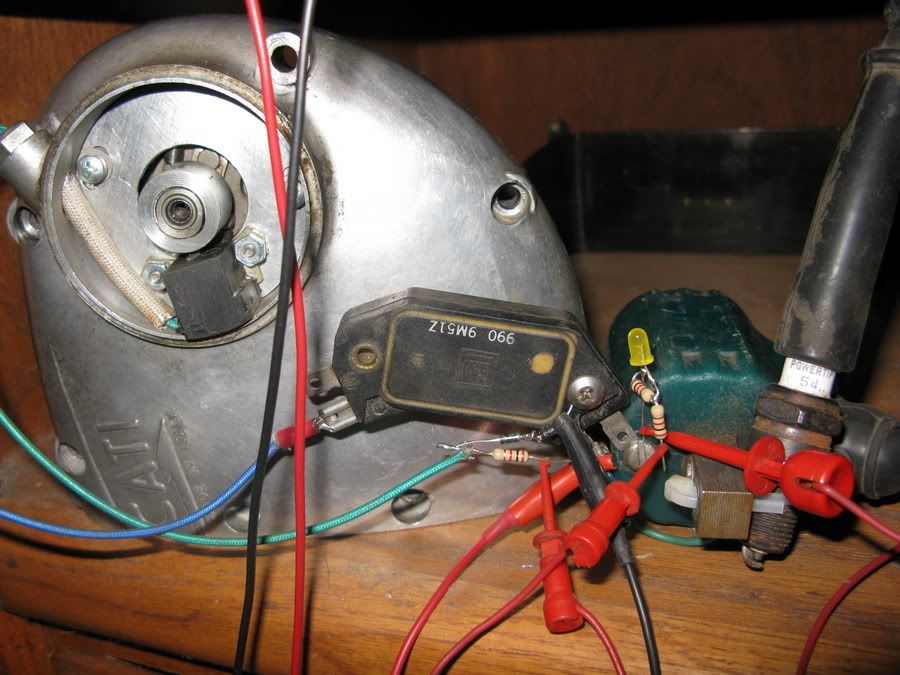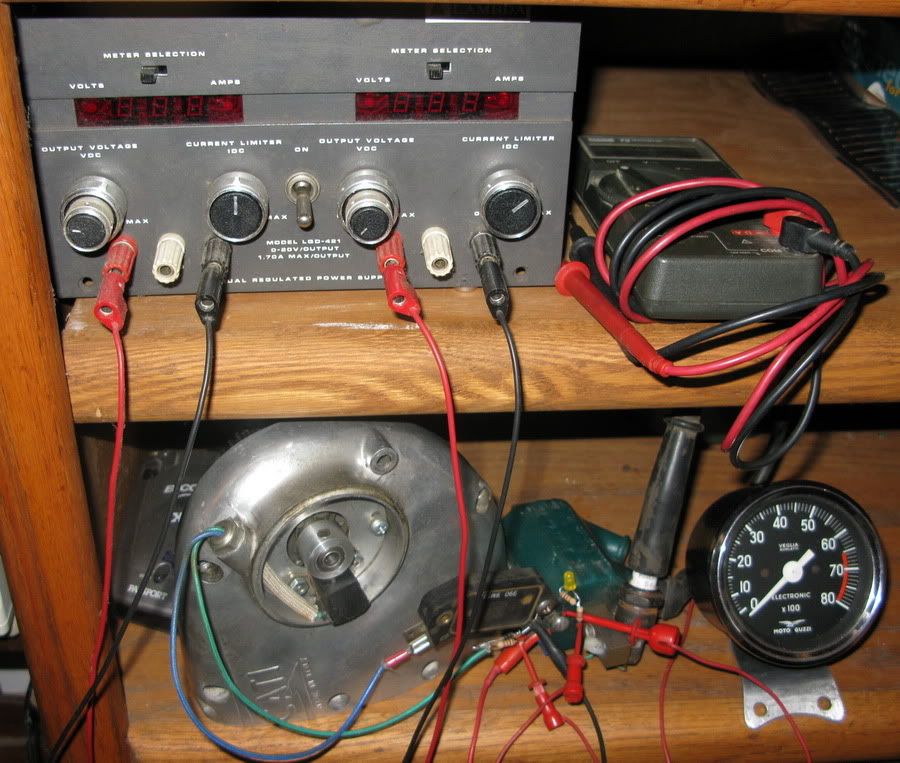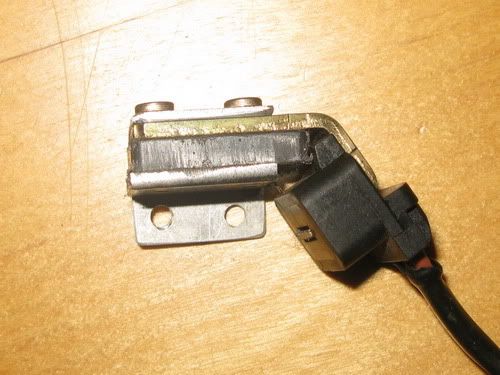It’s all basically a tried and true technology that has been adapted to countless applications over the years and I can’t imagine why it wouldn’t work for Ducati singles.
Found some very extensive info online for GM HEI modules adapted to motorcycle use. This http://home.comcast.net/~loudgpz/GPZweb/index.html#home is the most comprehensive site I’ve found with more info on this than I think anyone could need and lots of other interesting and useful stuff besides, be sure to bookmark it. The click-able sections for the HEI mod’s are right near the top. This guy is very thorough and meticulous.
I have a handful of modules left over from old Chevy 350 projects so I tried it out on the bench. Hooked it up to a Dyna coil and triggered by an XR125 pickup coil that's pulsed with a little high power refrigerator magnet embedded into an aluminum adaptor affixed over the stock points cam. You can also use points to trigger it and with an additional bypass circuit have the piece of mind of going back to stock point/condenser/coil with the flip of a switch. You can even add an LED to visually indicate the triggering point.
While the HEI’s will switch with points, one complication is that it triggers on closing rather than the normal opening but with still some more very simple circuitry this can be reversed. This really only needs to be done for the bypass to work as intended
For me this project started when I came across a box of 70’s Toyota Celica igniter boxes and pickups that I was putting on British twins and Harley’s back when. I guess the HEI route didn’t occur to me at the time and/or because I had a Celica and easy access to the Toyota parts for free. Can’t see the sense in resurrecting that old stuff now though as it’s probably now difficult to obtain spares, and it’s really Old. Might try the pickup's though...
I noticed that there are at least two basic types of pickup coils, one is a plain coil and requires a magnet to trigger, the other has the addition of it’s own magnet and only requires a simple rotating steel/iron protuberance to trigger it. The magnet trigger type can consist of either the actual magnet rotating or a magnet fixed opposite the pickup with a steel plate or ring rotating between the pickup and magnet with a gap for triggering. This style seems most common and likely what I’ll end up using, as it seems easier to tweek.
Of course there are also the optical and proximity sensor types. I like the idea of the magnetic units with this application as the HEI’s are already set up for it, they're very basic and doesn’t need additional external circuitry to function, though it seems like the optical method may yield better accuracy/resolution.

The pickup is mounted out by 180 simply because the wire routed better that way and the magnet on the advance was a tight squeeze when on the high side of the cam lobe so I put it on the opposite side and don’t flip the advance 180 to compensate.

Magnet type pickup coil...

Bill